
Beans, bountiful in nutrition and diverse in usage, have been a critical component of human diets for millennia. Their cultivation journey began in the fertile lands of Central and South America, from where they found their way into kitchens worldwide, serving as a key nutritional staple across a multitude of cultures.
In the present day, a rich tapestry of bean types exists, each distinguished by its unique features and applications.
Kidney beans, a variety of dry beans, find frequent use in a range of dishes, including chili and salads. They are easy to grow and are packed with protein and fiber, perfect for both farm and garden. Not only are these funny shaped beans nutrient-dense, packed with protein and fiber, but they also thrive in small-scale farms and home gardens. In the forthcoming segment, we will delve into some of the most widely grown kidney bean varieties and elaborate on their cultivation patterns.
Dark Red Kidney:Kidney beans, a variety of dry beans, find frequent use in a range of dishes, including chili and salads. They are easy to grow and are packed with protein and fiber, perfect for both farm and garden. Not only are these funny shaped beans nutrient-dense, packed with protein and fiber, but they also thrive in small-scale farms and home gardens. In the forthcoming segment, we will delve into some of the most widely grown kidney bean varieties and elaborate on their cultivation patterns.
Light Red Kidney:Kidney beans, a variety of dry beans, find frequent use in a range of dishes, including chili and salads. They are easy to grow and are packed with protein and fiber, perfect for both farm and garden. Not only are these funny shaped beans nutrient-dense, packed with protein and fiber, but they also thrive in small-scale farms and home gardens. In the forthcoming segment, we will delve into some of the most widely grown kidney bean varieties and elaborate on their cultivation patterns.
White Kidney:White Kidney is a variety of kidney bean that is also known as cannellini beans. It has a bushy growth habit, with plants reaching a height of about 18-24 inches. White Kidney beans are ready to harvest in about 90-100 days and produce about 15-20 bean pods per plant. Kidney beans demonstrate a preference for soil that ensures effective drainage and maintains a pH level between 6.0 and 7.0. Moreover, they grow best in temperatures that range from 70 to 80 degrees. It is best to plant them after the final frost of the spring season has passed.
The number of kidney bean plants per farm acre and the pounds per farm acre will depend on a variety of factors, including the planting density and the growing conditions. Planting 30,000 bean seeds per acre will produce 2,500 pounds of kidney beans.
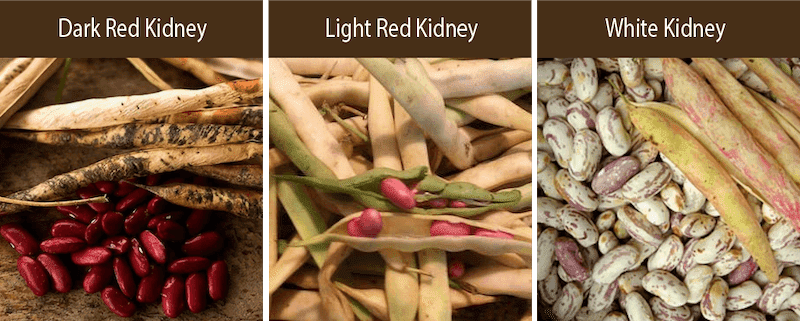
Black beans, another variety of dry beans, feature prominently in Latin American and Caribbean culinary traditions. They frequently grace soups, stews, and rice dishes with their presence. In the following segment, we will detail some of the most well-loved black bean varieties and provide insights into their cultivation patterns.
Black Turtle:Black Turtle is the most common variety of black bean and is widely used in Latin American and Caribbean cuisine. It has a bushy growth habit, with plants reaching a height of about 18-24 inches. Black Turtle black beans are ready to harvest in about 90-100 days and produce about 15-20 bean pods per plant. These beans favor soil conditions that offer good drainage and temperatures within the band of 70 to 80°F (21-27°C).
Midnight:Black Turtle is the most common variety of black bean and is widely used in Latin American and Caribbean cuisine. It has a bushy growth habit, with plants reaching a height of about 18-24 inches. Black Turtle black beans are ready to harvest in about 90-100 days and produce about 15-20 bean pods per plant. These beans favor soil conditions that offer good drainage and temperatures within the band of 70 to 80°F (21-27°C).
Black Magic:Black Magic is another popular variety of black bean that is known for its high yield and disease resistance. It has a bushy growth habit, with plants reaching a height of about 18-24 inches. Black Magic black beans are ready to harvest in about 90-100 days and produce about 15-20 bean pods per plant. Black beans grow well in in deep, loamy soil with a pH of around 7 and flower when temperatures reach 75 degrees. It's advisable to plant them once the threat of the last spring frost has subsided. The number of black bean plants per farm acre and the pounds per farm acre will depend on a variety of factors, including the planting density and the growing conditions. Sowing 40,000 seeds per farm acre can yield 3,000 pounds of black magic beans.
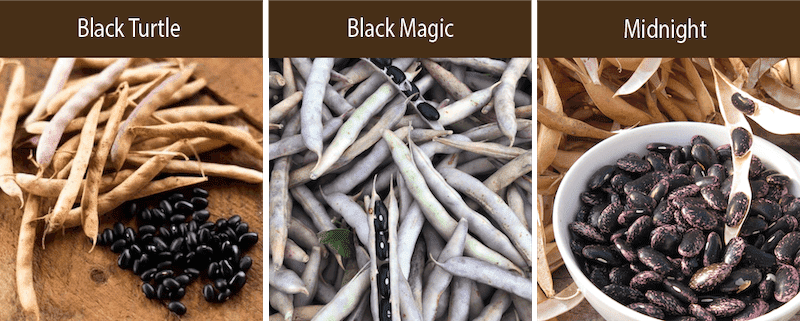
Also referred to as white beans, Navy beans are a variety of dry beans extensively employed in soups, stews, and baked beans. With their rich protein, fiber, and nutrient content, they are popularly grown on small-scale farms and in home gardens. In the following segment, we will elaborate on some of the most favored Navy bean varieties and their cultivation practices.
Vermont Cranberry:Vermont Cranberry is a popular variety of navy bean that is known for its unique flavor and texture. It has a bushy growth habit, with plants reaching a height of about 18-24 inches. Vermont Cranberry navy beans are ready to harvest in about 85-95 days and produce about 12-15 bean pods per plant.
Sanilac:Sanilac is another popular variety of navy bean that is prized for its high yield and disease resistance. It has a bushy growth habit, with plants reaching a height of about 16-18 inches. Sanilac navy beans are ready to harvest in about 85-95 days and produce about 15-20 bean pods per plant. Like most soup beans, they grow best in well-fertilized soil.
Bays:Sanilac is another popular variety of navy bean that is prized for its high yield and disease resistance. It has a bushy growth habit, with plants reaching a height of about 16-18 inches. Sanilac navy beans are ready to harvest in about 85-95 days and produce about 15-20 bean pods per plant. Like most soup beans, they grow best in well-fertilized soil.
Navy beans prefer composted soil containing a mix of ages animal manure and plant matter. They should be planted 19 days after the last frost in the spring. The number of navy bean plants per farm acre and the pounds per farm acre will depend on a variety of factors, including the planting density and the growing conditions. A consistent planting of 30,000 to 40,000 plants should produce an average of 2,500 pounds of navy beans per farm acre.
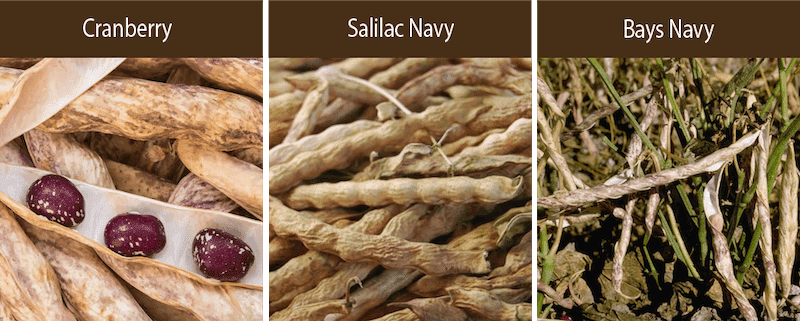
Soup beans, like Pinto beans are variety of dry beans that are used in southwest and Mexican recipes. They are one of the better sources of protein, fiber, and other nutrients, and are primarily used in soups, stews, and chili.
Maverick:Maverick is a popular variety of pinto bean that is known for its high yield and disease resistance. It has a bushy growth habit, with plants reaching a height of about 16-18 inches. Maverick pinto beans are ready to harvest in about 90-100 days and produce about 25-30 bean pods per plant. They tend to flourish in poor soils and hot temperatures.
Anasazi:Maverick is a popular variety of pinto bean that is known for its high yield and disease resistance. It has a bushy growth habit, with plants reaching a height of about 16-18 inches. Maverick pinto beans are ready to harvest in about 90-100 days and produce about 25-30 bean pods per plant. They tend to flourish in poor soils and hot temperatures.
Othello:Othello is another popular variety of pinto bean that is known for its high yield and disease resistance. It has a bushy growth habit, with plants reaching a height of about 16-18 inches. Othello pinto beans are ready to harvest in about 90-100 days and produce about 25-30 bean pods per plant. These beans like clay soils that contain higher than normal mineral content.
Othello is another popular variety of pinto bean that is known for its high yield and disease resistance. It has a bushy growth habit, with plants reaching a height of about 16-18 inches. Othello pinto beans are ready to harvest in about 90-100 days and produce about 25-30 bean pods per plant. These beans like clay soils that contain higher than normal mineral content.
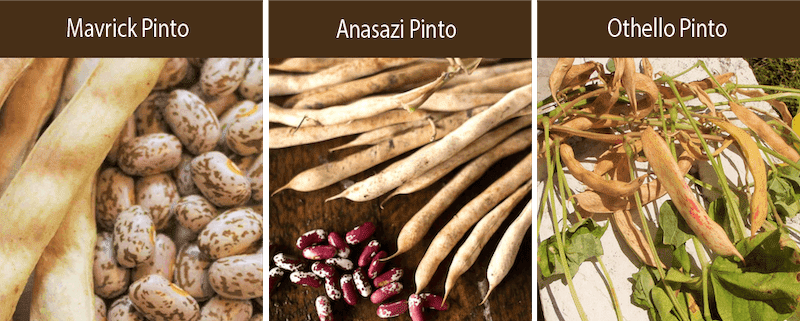
Lima beans are grown for their creamy texture and delicate flavor. They are found in succotash, stews, soups, and salads and fast becoming a favorite with home gardens.
Fordhook:Lima beans are grown for their creamy texture and delicate flavor. They are found in succotash, stews, soups, and salads and fast becoming a favorite with home gardens.
Henderson:Lima beans are grown for their creamy texture and delicate flavor. They are found in succotash, stews, soups, and salads and fast becoming a favorite with home gardens.
Jackson Wonder:Jackson Wonder is a heritage variety of lima bean that has been grown for generations. It has a bushy growth habit, with plants reaching a height of about 18-24 inches. Jackson Wonder lima beans are ready to harvest in about 80-90 days and produce about 12-15 bean pods per plant. As a low bush plant, they make a great bean to grow in prevailing or strong wind areas.
Lima beans prefer well-drained soil with a pH range of 6.0-7.0. They also prefer a temperature range of 60-85°F (16-29°C) and should be planted after the last frost in the spring. The number of lima bean plants per farm acre and the pounds per farm acre will depend on a variety of factors, including the planting density and the growing conditions. An acre planted with 40,000 plants will on average, produce 3,000 pounds of bean pods.
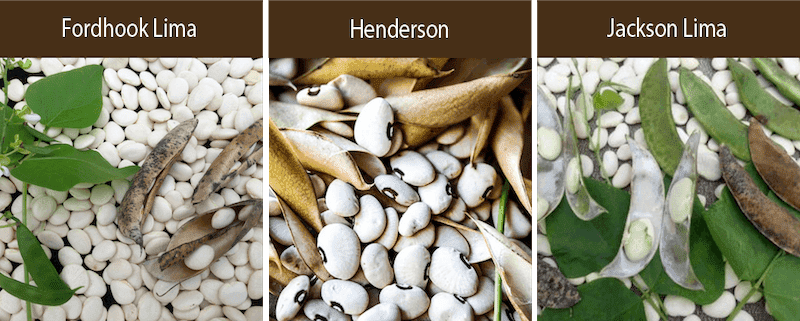
Lima beans prefer well-drained soil with a pH range of 6.0-7.0. They also prefer a temperature range of 60-85°F (16-29°C) and should be planted after the last frost in the spring. The number of lima bean plants per farm acre and the pounds per farm acre will depend on a variety of factors, including the planting density and the growing conditions. An acre planted with 40,000 plants will on average, produce 3,000 pounds of bean pods.
Kabuli:KKabuli is the most common variety of garbanzo bean and is the type used to make canned and dried chickpeas. It has a bushy growth habit, with plants reaching a height of about 24-30 inches. Kabuli garbanzo beans are ready to harvest in about 90-100 days and produce about 25-30 bean pods per plant.
Desi:Kabuli is the most common variety of garbanzo bean and is the type used to make canned and dried chickpeas. It has a bushy growth habit, with plants reaching a height of about 24-30 inches. Kabuli garbanzo beans are ready to harvest in about 90-100 days and produce about 25-30 bean pods per plant.
Black:Black garbanzo beans are a unique variety that have a dark color and a slightly nutty flavor. They have a bushy growth habit, with plants reaching a height of about 18-24 inches. Black garbanzo beans are ready to harvest in about 90-100 days and produce about 20-25 bean pods per plant. Garbanzo beans love to grow embossed in compost where the pH level is around 6.5. They also favor temperatures ranging from 60 to 85°F (16-29°C). To ensure successful growth, these beans should be planted after the final frost of the spring season.
Black garbanzo beans are a unique variety that have a dark color and a slightly nutty flavor. They have a bushy growth habit, with plants reaching a height of about 18-24 inches. Black garbanzo beans are ready to harvest in about 90-100 days and produce about 20-25 bean pods per plant. Garbanzo beans love to grow embossed in compost where the pH level is around 6.5. They also favor temperatures ranging from 60 to 85°F (16-29°C). To ensure successful growth, these beans should be planted after the final frost of the spring season.
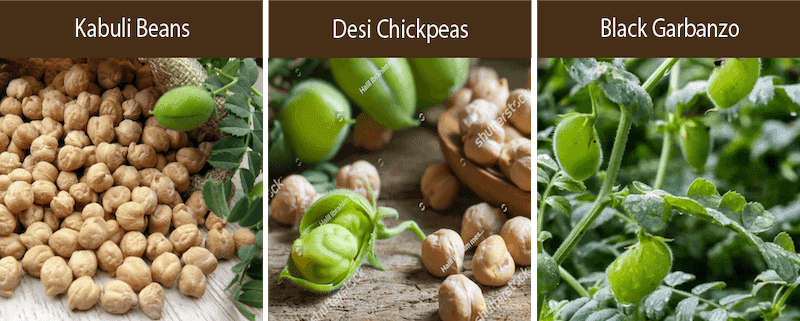
Soybeans, are considered the foundation bean foundation for numerous soy-based food products, including tofu, soy milk, and tempeh. They are also a popular crop for livestock feed and as a rotation crop for farmers.
Envy:Envy is a popular variety of soybean that is known for its high yield and disease resistance. It has a bushy growth habit, with plants reaching a height of about 24-30 inches. Envy soybeans are ready to harvest in about 80-90 days and produce about 50-60 bean pods per plant. They prefer in warn soil and hotter than normal temperatures.
Beeson:Beeson is a variety of soybean that is prized for its high protein content and nutty flavor. It has a bushy growth habit, with plants reaching a height of about 24-30 inches. Beeson soybeans are ready to harvest in about 85-95 days and produce about 40-50 bean pods per plant.
EdamameEEdamame is a variety of Asian soybean. It has a bushy growth habit, with plants reaching a height of about 24-30 inches. Edamame soybeans are ready to harvest in about 70-80 days and produce about 30-40 bean pods per plant. Soybeans prosper in moist, well-draining soil with a dash of Epson salts and gypsum added to the soil. They prefer temperatures between 60 and 85°F (16-29°C) and are best planted post the last spring frost.
Several factors influence the number beans harvested from a farm acre including soil type, wind conditions, irrigation, and temperature. In ideal conditions, an acre of edamame will support 200,000 plants, which are capable of producing well over a million pods at harvest.
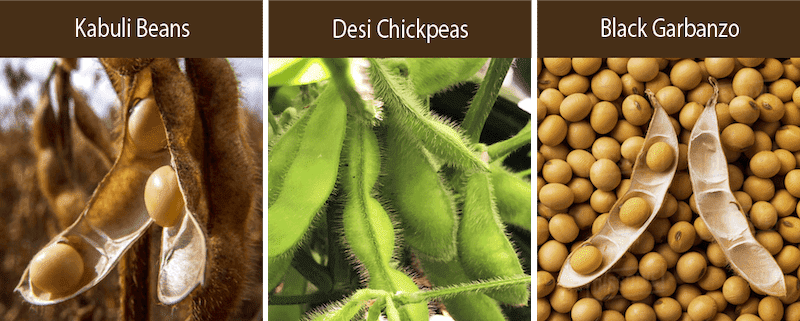
Several factors influence the number beans harvested from a farm acre including soil type, wind conditions, irrigation, and temperature. In ideal conditions, an acre of edamame will support 200,000 plants, which are capable of producing well Ove a million pods at harvest.
Lamon is a traditional Italian variety of cannellini bean that is prized for its creamy texture and delicate flavor. It has a bushy growth habit, with plants reaching a height of about 18-20 inches. Lamon beans are ready to harvest in about 80-90 days and produce about 5-6 bean pods per plant.
Great Northern - Great Northern is a common variety of white bean that is often used as a substitute for cannellini beans. It has a bushy growth habit, with plants reaching a height of about 18-20 inches. Great Northern beans are ready to harvest in about 85-95 days and produce about 4-5 bean pods per plant. As the name suggests, Great Northern prefers the short, warm summers of he north, where it sets pods at night in moonlight.
White Kidney - White Kidney is another variety of white bean that is similar to cannellini beans in flavor and texture. It has a bushy growth habit, with plants reaching a height of about 18-20 inches. White Kidney beans are ready to harvest in about 80-90 days and produce about 5-6 bean pods per plant. Cannellini beans flourish best in well-drained soil that maintains a pH level between 6.0 and 7.0. They prefer a temperature spectrum of 60 to 85°F (16-29°C) and should ideally be planted once the final frost of spring has passed.
The count of cannellini bean plants per acre and the yield in pounds per acre are influenced by factors such as planting density and the overall growing conditions. Generally speaking, 30,000 cannellini plants will produce 200,000 pods an acre.
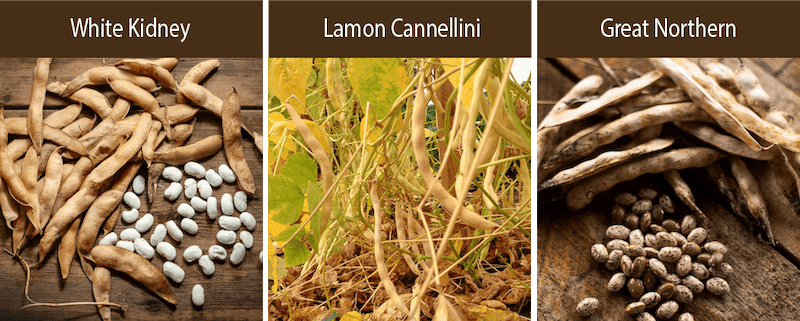
Bush beans are a popular type of bean that grow in a compact, bush-like habit. Bush beans come in a plethora of varieties, each exhibiting distinctive features and specific cultivation requirements. In this section, we will describe popular colored varieties of bush beans and their growing habits.
Bush beans are a compact plant that grows in a bushy shape, usually not more than 2 feet tall. They do not require any support or trellising and are well-suited for small gardens or containers. Bush beans tend to produce their harvest all at once, over a period of 1-2 weeks, making them a good choice for gardeners who want to can or freeze their beans. They produce smaller yields per plant than pole beans but require less space and are easier to grow in small gardens. Bush beans grow well in a range of climates and soil types and can be planted directly in the garden after the last frost.
Pole beans, on the other hand, are a vining plant that requires support or trellising to grow. They can climb 10 foot poles, trellises, or other structures, whatever id within reach of its tendrils. Pole beans produce their harvest over a longer period of time, up to several months, and tend to produce more beans per plant than bush beans. They are a great choice for gardeners with limited space. Pole beans prefer warm climates and well-drained soil and should be planted after the last frost.
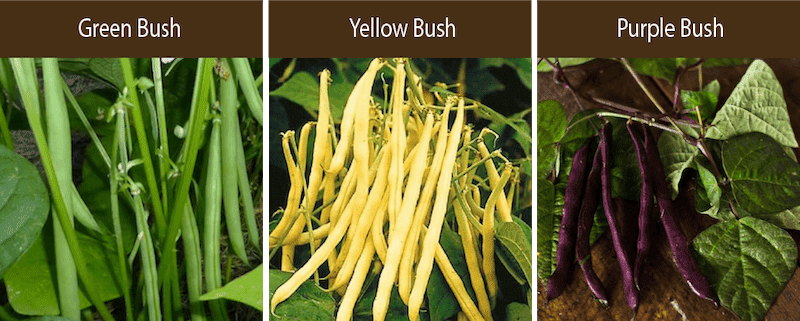
Blue Lake:Blue Lake: Blue Lake is a popular variety of pole bean that is known for its tender and meaty beans. It has a vining growth habit, with plants reaching a height of about 6-8 feet. Blue Lake pole beans are ready to harvest in about 60-70 days and produce about 8-10 bean pods per plant. They prefer to grow in deep, enriched, composted earth.
Kentucky Wonder:Blue Lake: Blue Lake is a popular variety of pole bean that is known for its tender and meaty beans. It has a vining growth habit, with plants reaching a height of about 6-8 feet. Blue Lake pole beans are ready to harvest in about 60-70 days and produce about 8-10 bean pods per plant. They prefer to grow in deep, enriched, composted earth.
Fortex:Fortex is a unique variety of pole bean that has a long and slender shape. It has a vining growth habit, with plants reaching a height of about 8-10 feet. Fortex pole beans are ready to harvest in about 60-70 days and produce about 12-15 bean pods per plant.
Pole beans like a pH range between 6.0 and 7.0 to flower and set pods and temperatures between 70 and 80 degrees. The number of pole bean plants per farm acre and the pounds per farm acre will depend on a variety of factors, including the planting density and the growing conditions. An acre growing 15,000 pole bean plants could potentially produce 4,000 pounds of beans.
Growing bean varieties on farms and in gardens is dominated by conventional methods that haven’t really changed for centuries other than the transition from hand, plow to tractor cultivation. Beans are still grown and cultivated in parallel rows typically water from above by rainfall or spray irrigation. A new approach to growing beans on farms and in gardens is to grow beans in spirals or circles and feed plants nutrient using a cradled propagation system. The system targets the root of each plant, which saves both fertilizer and water while accelerating plant growth. The system on average doubles flowering and pod set of each plant.